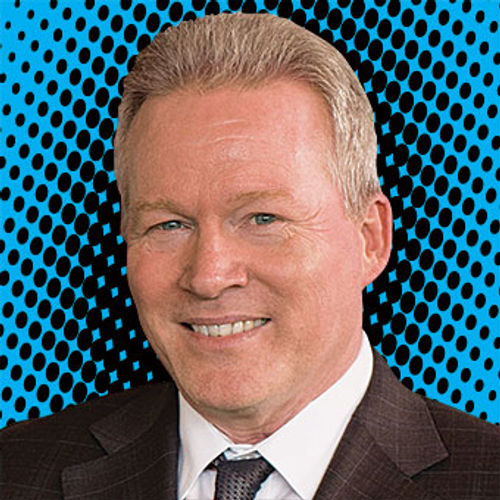John Delaney, president of Windstar Cruises, was interviewed by editor
in chief Arnie Weissmann for his thoughts on what 2019 might bring:
We're seeing continued strong booking demand in the U.S. We're just under 85% North America-sourced, and we're already up double digits from 2018 in year-to-date forward bookings, and 2018 was a good year.

John Delaney
Part of it is that we added so many new destinations, so we're getting a lot of our repeat guests back trying new places. We used to see them once every two years because our itineraries hadn't changed much. But we've added 150 ports since I came here a couple of years ago, most of them in 2018, and we're getting people aboard two or three times a year.
Despite recent stock market volatility, I'm still comfortable. We're an expensive purchase. Our average transaction's pushing $12,000 now, so we do see lulls when the stock market has a horrible day, but it always comes back. Remember, after the last recession, people stopped spending on expensive goods, but they didn't stop traveling, and for our demographic, it's still true today.
For 2018, we're up 33% in Australia and 26% in U.K. bookings. We've done a lot to try to be more visible there by working with trade partners, and that's been key. A market like Australia likes to travel for an extended period three-, four-week vacations. We've added more long itineraries, and now most of our itineraries have back-to-back options to string together at least two cruises. We have a 51-day Grand Mediterranean itinerary next year that's selling like crazy.
And even beyond those traditional English-speaking markets, we're seeing some nice smaller growth in other European markets. We do pretty well in Singapore and Hong Kong; we have strong partners there. But candidly, I don't have enough capacity to focus on Asia right now. There's still so much low-hanging fruit in the U.K. and Australia that I'd rather focus on.
There's a lot of capacity coming [into cruising as a sector]. I would not want to be a big cruise line right now; I think there's still a tremendous growth opportunity in my segment; small-ship cruising is booming. There were no small ships on the order books five years ago, and now there are 20-plus.
Of course, you look at all those beds being built in the small-ship space, and it's not even equal to one of the big, new, contemporary ships. I do worry a little bit about the big ship lines, but I'm sure they're doing everything they can to plan for additional capacity. Cruising's up, it's a great way to travel, and it represents a tremendous travel value, whether you're on a contemporary line or a small-ship line.
Windstar will be stretching three ships, and the first one will go into dry-dock in October and be finished in very early February 2020. It's a longer dry-dock period than is normal for a stretch; Silversea, for example, just did their ship in about 60 days, and ours is just over four months. But no one's ever done what we're doing, which is a stretch, a re-engine and new plumbing, all at the same time. When those ships come out, virtually every area will have been touched.
We've looked at building more sail-assisted cruise ships, and we haven't ruled anything out. The stretch project made the most sense in the short term. It had the biggest, quickest financial return because with the re-engining it's far more fuel-efficient. We can leverage compatibility with the new fuel regulations that are coming in 2020 across an additional 100 passengers per ship, so the flow-through on the capacity was far greater than a newbuild.
I'm a huge believer and this is from my Seabourn and Holland America days in the power of the travel professional, and we dialed-up everything that we were doing with the travel agents, building a solid base for growth so that when we take on the 24% capacity increase from the stretches, we're ready for it. We had over 600 agents sail with us this year on a fam product. Getting them to see the product is key.
And we're starting to do more and more cross-selling with [parent company] Xanterra and some of the Anschutz Corp. sister companies. For example, the Broadmoor and Sea Island [resorts] have golf club memberships with a high-income demographic that travels a lot. It's a perfect Windstar demographic. We're also working more closely with AEG, [Anschutz Corp.'s] big entertainment/sports company. They've got very high-end season ticket holders and box suite owners.
We're always looking for opportunities for organic growth and to extend the brand. I think the brand awareness of Windstar is dramatically improved from where it was just a few years ago, and there certainly is growth potential under the Windstar umbrella for other types of cruise products.